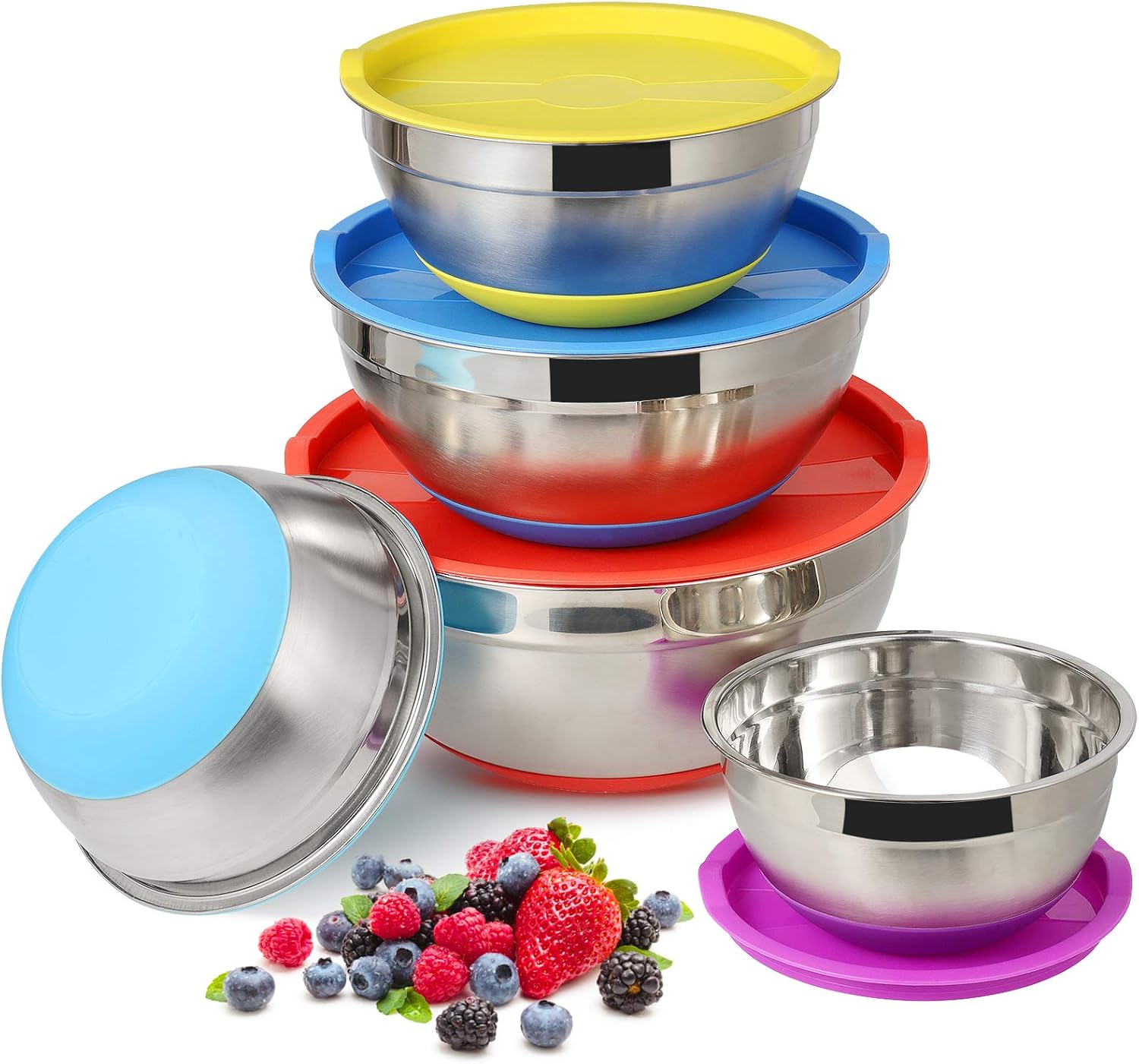We all want a healthy kitchen, free from harmful chemicals lurking in our cookware and food prep supplies. While we often focus on the pots and pans, the humble mixing bowl plays a surprisingly significant role in keeping our food safe and toxin-free. And when it comes to mixing bowls, stainless steel emerges as a champion of health and safety.
The Toxin Threat in Your Kitchen: Why Stainless Steel Matters
Many common kitchen materials can leach chemicals into your food, especially when exposed to heat, acidic foods, or harsh cleaning agents. Plastic bowls, for example, can contain BPA (bisphenol A), a compound linked to various health issues. Certain non-stick coatings can also release harmful chemicals at high temperatures. Even some ceramic bowls may contain lead or cadmium if not properly glazed.
Stainless steel, on the other hand, offers a significantly safer alternative. Made from a combination of iron, chromium, and nickel, stainless steel is naturally resistant to corrosion and doesn’t react with most foods or liquids. This means it’s far less likely to leach chemicals into your culinary creations, preserving the integrity and safety of your ingredients.
Superior Durability and Longevity: A Long-Term Investment
Beyond its non-reactive properties, stainless steel bowls boast exceptional durability. Unlike plastic or glass bowls, which can easily crack or chip, stainless steel stands up to daily wear and tear. They can handle vigorous mixing, withstand the impact of dropping, and tolerate the rigors of even the most enthusiastic baker or cook. This inherent robustness translates into a long-term investment, reducing the need for frequent replacements and minimizing waste.
Easy Cleaning and Hygiene: Keeping Your Kitchen Spotless
Maintaining a clean kitchen is paramount for food safety. Stainless steel bowls are incredibly easy to clean. They can be easily washed by hand or tossed into the dishwasher, making post-meal cleanup a breeze. The smooth, non-porous surface prevents the buildup of bacteria and food particles, ensuring a hygienic environment for food preparation.
Moreover, the absence of porous materials eliminates the risk of harboring lingering odors or stains. Unlike plastic bowls that can absorb stubborn smells from garlic or onions, stainless steel remains odor-neutral, allowing your kitchen to maintain a fresh and clean aroma.
Choosing the Right Stainless Steel Bowls: Key Considerations

While most stainless steel bowls are safe, there are a few factors to consider when making your purchase:
- Gauge: The gauge refers to the thickness of the steel. A lower gauge (e.g., 18/8) indicates thicker, more durable stainless steel. Thicker bowls are less prone to bending and denting.
- Material Composition: Look for bowls made from 18/8 stainless steel, which represents 18% chromium and 8% nickel. This combination provides superior corrosion resistance and durability.
- Construction: Seamless bowls are generally preferred, as seams can harbor bacteria. Ensure the bowl is well-constructed with no sharp edges or rough welds.
- Size and Set: Consider the range of sizes and the number of bowls you’ll need for your cooking needs. Nesting bowls save space in the cupboard.
Stainless Steel vs. Other Materials: A Comparative Overview

Let’s compare stainless steel bowls to some popular alternatives:
| Material | Pros | Cons | Toxicity Concerns |
|---|---|---|---|
| Stainless Steel | Durable, non-reactive, easy to clean, hygienic | Can be more expensive than plastic, can dent | Low to none |
| Plastic | Lightweight, inexpensive, shatterproof | Can scratch, leach chemicals (BPA), may absorb odors | Potential BPA leaching |
| Glass | Durable, non-reactive, aesthetically pleasing | Can break, can be heavy, may chip | Generally low, but some lead concerns with cheaper options |
| Ceramic | Aesthetically pleasing, durable (high-quality options) | Can break, potentially leach lead or cadmium (poor quality options) | Potential lead and cadmium leaching |
Maintaining Your Stainless Steel Bowls: Tips for Lasting Performance

To maximize the lifespan and safety of your stainless steel bowls, follow these simple maintenance tips:
- Hand wash or use the dishwasher’s top rack to avoid scratching.
- Avoid using abrasive cleaners or scouring pads.
- Use a soft cloth or sponge for cleaning.
- Dry thoroughly to prevent water spots.
- Avoid storing acidic foods in the bowls for extended periods.
Conclusion: Embrace the Safety and Durability of Stainless Steel

In the pursuit of a healthy and toxin-free kitchen, choosing the right materials is crucial. Stainless steel bowls provide a safe, durable, and easy-to-clean solution for all your mixing, prepping, and serving needs. Their non-reactive nature ensures your food remains pure and free from unwanted chemicals, protecting your family’s health and well-being for years to come.
By investing in a high-quality set of stainless steel bowls, you’re not just equipping your kitchen—you’re investing in your health and the future of your cooking experience.